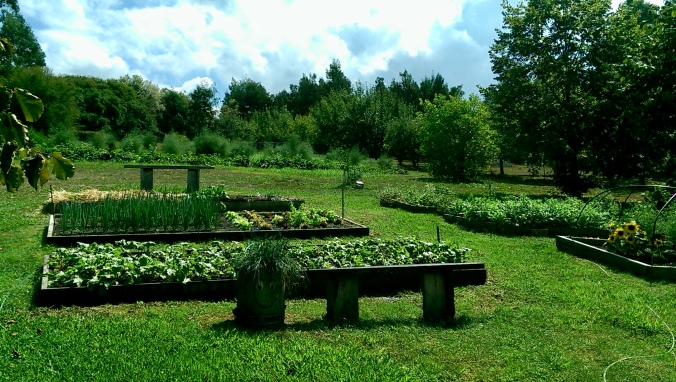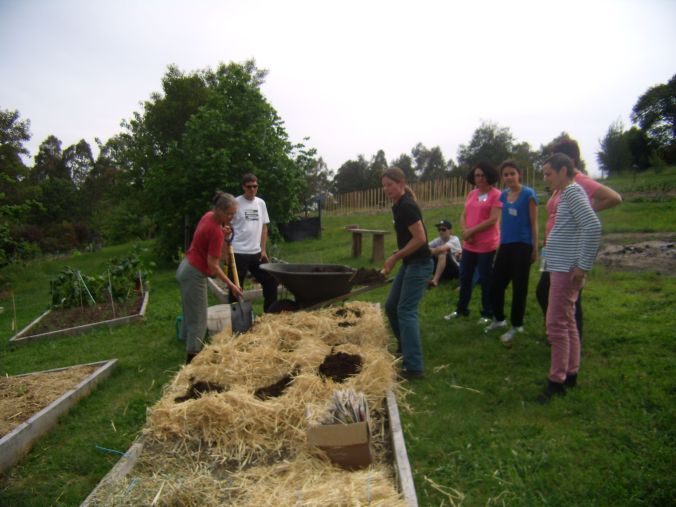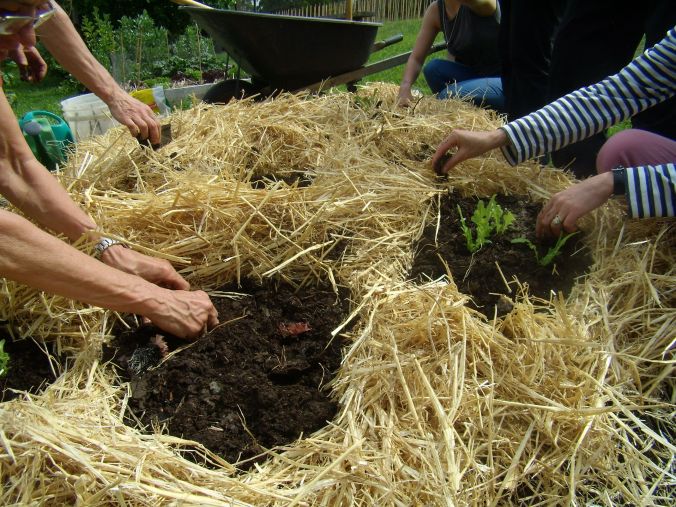What is a no-dig garden and how do you make one?

A no-dig garden is a garden that is created on top of the existing ground. It can be build on top of lawn, gravel, or paving and is great for gardens where the soil is a heavy clay or is full of rocks. You may sometimes hear of the term ‘lasagna gardening’, this is simply another form of creating a no-dig garden. Both methods rely on placing alternating layers of organic matter on top of each other to create the garden. This is similar to making a compost heap but because it has a smaller carbon to nitrogen ratio won’t heat up and can therefore be planted into the same day.
Below is an example of a no-dig garden I made with the participants at the Gawler Cancer Foundation
What you will need:
To make a garden 1.2mx1.5m you will need to use some old newspapers, 1 bale of straw, 1 bale of lucerne, a wheelbarrow of home made compost (bought bagged compost is OK too) and about 7kg of organic chicken manure pellets. Here is how to make it…
Step 1
It is best to have some sort of edging to contain the garden and stop the edges from collapsing as you build the layers. This can be as simple as some stakes hammered into the ground with chickenwire wrapped around them, or if you want to have a more aesthetic look you can use timber, corrugated iron or any of the raised garden bed kits available from most garden centres. The best size to aim for is a garden bed no more than 1.2m wide so that you can comfortably reach into the middle from both sides without stepping into the bed. If the garden bed is only accessible from one side make it no more than 75cm wide. A depth of 20cm- 30cm is sufficient, but if your bed is deeper you’ll just need to add a few more layers of organic matter.

Step 2
If starting on top of a lawn, mow it very short and then place your bed into position. Layer newspaper about 8 pages thick to smother the grass inside your bed. If starting on gravel or paving, position your bed and first place a layer of leaves and small twigs about 10cm deep to aid with drainage, then cover with newspaper.
Step 3
Wet the newspaper and cover with pads of lucerne hay. On top of this sprinkle a light layer of organic chicken manure pellets (or aged cow or horse manure). Water the layers well.

Step 4
Next spread a loose layer of straw all over the bed, about 20cm deep.
Step 5
If you have lots of compost available spread a layer at least 10cm thick on top of the straw. Alternatively make some pockets in the straw down to the manure layer and fill these with compost.

Step 6
Plant your vegetable seedlings or seeds straight in to the compost! Most vegetable or even flower seedlings are suitable, but avoid planting carrots, parsnips and other root vegetables until all the layers have broken down.

Once you have harvested your first crop repeat steps 3-6 until all the layers have composted down again or until they reach the top of your edging. You are now left with a vegetable garden filled with the most amazing organic compost…that you can directly plant into…and you’ve not had to dig!
